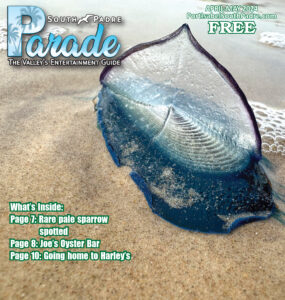By STEVE HATHCOCK
Special to the PRESS
Our story begins on the eve of third Battle of New Orleans. (January 8-18, 1815) General Andrew Jackson accepted the offer of help from the Baratarians. In return, all who fought would receive a full pardon from the United States Government. It was a chance to start life anew and the ragtag army of red-shirted buccaneers joined the rest of the defenders in what would become a major assault by the British.
The Americans made their stand behind Rodriguz Canal. It was a four foot deep, twenty foot wide abandoned mill race located five miles from New Orleans. Across the mile-long front, Jackson’s men constructed a parapet of cotton bales and sugar casks filled with dirt. The ground in front of the bulwark sloped down to the canal bank itself. Four heavy, well-protected guns, under the command of Dominique You and Captain Belluche, were placed along the top of the defenses.
At this point, Jackson had an army of five thousand one hundred men. They included mounted regulars, volunteers, United States Dragoons and a mixture of Kentuckians and Creoles. They were joined by the “Battalion of Free Men of Color,” Santo Dominican Negroes “come to join the cause of freedom.” It must have been a very ironic moment for the Lafitte brothers, to fight alongside some of the same slaves, who, armed by the Spanish a few short years before, had driven the Lafittes and other white planters off the Island of Santo Domingo.
Historian Marquis James wrote of a meeting between Jackson and You during the early morning hours of January 8, 1815.
During a late night inspection of the defenses, Jackson smelled coffee brewing. Following his nose, he came upon the Baratarian’s battery. A group of men sat around a bank of glowing embers, dripping coffee the Creole way.
“Smells like better coffee than we can get,” Jackson remarked upon recognizing Dominique. “Did you smuggle it?”
“Mebbe so, General,” rejoined the little captain, filling a cup for his commander.
Side by side the two stood, sipping coffee in front of the fire. The tall general who would become president and the diminutive buccaneer each lost in his own thoughts, about what tomorrow would bring. Destiny or death….. perhaps both.
On January 8th, General Parkenham ordered a dawn assault against the ragtag army that stood between him and the soft underbelly of the City of New Orleans. Starting from the opening shot of the attack, everything went wrong for the English
There was not enough earth for the British gunners to build gun batteries and only a quarter of the force was able to cross the canal. But this would not be the only calamity to befall the British troops that foggy dawn morning.
Jean Lafitte described the opening shots of the battle in his diary:
“I could hear the roaring of cannon in the distance. As I had been running so much in the brushwood and mud I was exhausted and out of breath. My hands were bruised, my clothes soiled and torn and my feet soaking wet. At dawn I was anxious to find my cannoneers. I could hardly believe my eyes when I arrived at the front lines. My brother Alexander, who was the most expert marksman in the battery, had with one shot knocked the English General Pakenham from his horse, tearing off both his legs. The general died two hours later.”
“Fire! Load! Aim! Fire! The American’s muskets spat flames and smoke until the whole scene resembled a scene from Dante’s Inferno. The 44th broke and ran from the withering fire pouring out of the American lines. The panic spread and Major-General Gibb’s Brigade began to mill about uncertainly. A few men crossed the canal, but without ladders their advance was pointless. The 93rd Highlanders, all chosen for their height which was in excess of six feet, pushed ahead in the center of the whole melee until they were only 100 yards short of the American lines. Their commanding officer was killed and his successor would neither advance nor retreat without clear orders. There they stood marching in place, waiting orders. The living moved up to fill the spaces left by their fallen comrades, as the whole American line poured their fire into the massed ranks. After several long agonizing minutes, the order came from General Lambert to withdraw from the field. They withdrew with the same parade ground precision as they had advanced. They left behind three quarters of their men who had been killed or wounded. The British had nearly 2000 casualties that day of whom 557 were from the 93rd . The American losses amounted to six killed and seven wounded. Ironically, because of the slowness of news, neither side knew that a peace treaty had been signed two weeks before the battle had begun.
Want the whole story? Pick up a copy of the Port Isabel-South Padre Press, or subscribe to our E-Edition by clicking here.


Comments